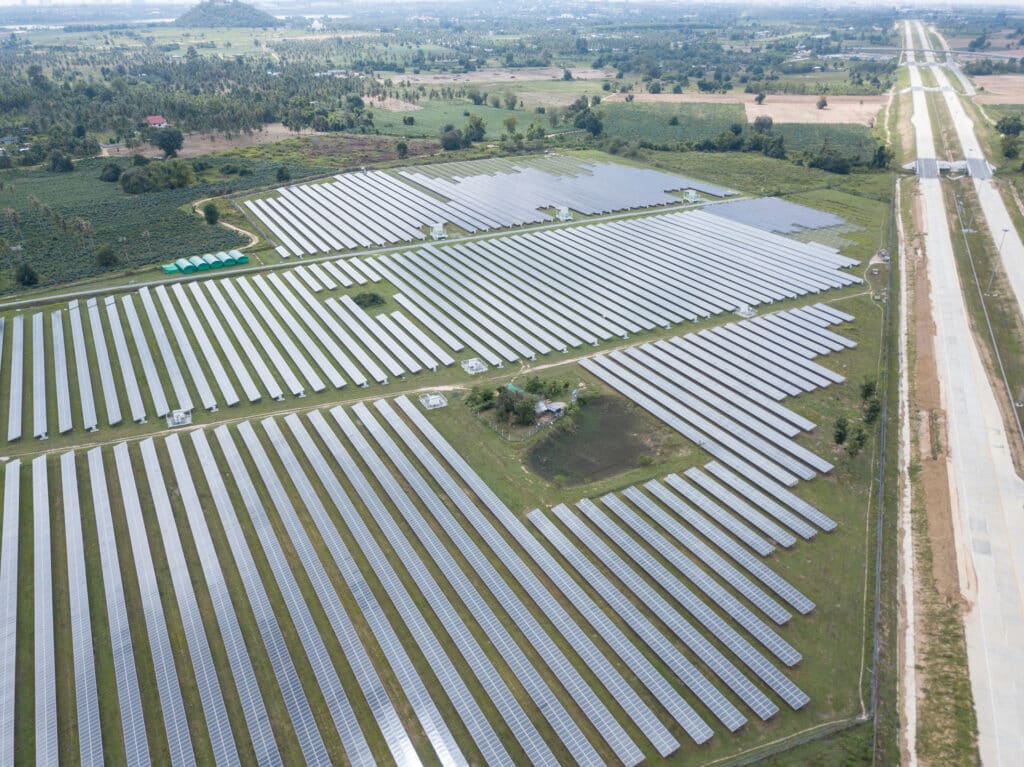In the realm of renewable energy, solar power stands as a beacon of promise, offering a sustainable alternative to traditional fossil fuels. Among the various methods of solar energy generation, solar thermal PV stations represent a significant advancement. However, like any complex infrastructure, these stations require meticulous maintenance to ensure optimal performance. Herein lies the potential of solar drone inspection—a cutting-edge technology poised to revolutionize the maintenance and efficiency of solar thermal PV stations.
What are Solar thermal PV stations?
Solar thermal PV stations, often comprising vast arrays of solar panels, are subject to wear and tear over time. Dust accumulation, panel degradation, and potential malfunctions can all hamper the efficiency of these systems. Traditional methods of inspection, involving manual labor or ground-based monitoring, are often time-consuming, expensive, and may not provide comprehensive insights into the condition of the entire system. This is where solar drone inspection steps in, offering a solution that is both efficient and effective.
Drones for Solar Inspection
Solar drones, equipped with advanced imaging technology such as infrared cameras and high-resolution sensors, are capable of conducting thorough inspections of solar thermal PV stations from the air. This aerial perspective enables inspectors to survey large areas quickly and with unparalleled detail. By capturing images and data from various angles, solar drones can identify potential issues such as panel defects, hot spots, or shading caused by debris or vegetation.
The Advantages of Solar Drone Inspections for Solar Thermal PV Stations
One of the key advantages of solar drone inspection is its ability to detect problems early, before they escalate into more significant issues. For example, infrared imaging can reveal areas of overheating, indicating potential faults in the system that may lead to reduced performance or even equipment failure. By identifying these issues promptly, maintenance teams can take corrective action, thereby minimizing downtime and maximizing energy output.
Moreover, solar drone inspection offers a level of accessibility that traditional methods cannot match. In many cases, solar thermal PV stations are located in remote or challenging terrain, making manual inspections difficult or impractical. Solar drones, however, can navigate these environments with ease, providing comprehensive coverage of the entire system without the need for extensive manpower or logistical challenges.
The data collected by solar drones during drone inspection flights can also be analyzed using advanced algorithms and machine learning techniques. By processing this data, operators can gain valuable insights into the performance trends of the solar PV system over time. This predictive maintenance approach enables proactive interventions to address potential issues before they impact performance, ultimately enhancing the overall reliability and longevity of the system.
It can play a crucial role in optimizing the energy output of solar thermal PV stations. By identifying areas of shading or obstruction caused by nearby structures or vegetation, operators can take remedial actions to improve sunlight exposure to the solar panels. This might involve trimming trees, repositioning panels, or adjusting the layout of the array to maximize energy capture throughout the day.
Solar drone inspection can also contribute to safety and environmental sustainability. Traditional inspection methods often involve personnel working at heights or in hazardous conditions, posing risks to their safety. Solar drones eliminate the need for such risky activities, reducing the likelihood of accidents or injuries. Moreover, by facilitating proactive maintenance and minimizing downtime, solar drone inspection helps ensure the continuous operation of solar thermal PV stations, thereby supporting their role in reducing greenhouse gas emissions and mitigating climate change.
Despite the numerous benefits of solar drone inspection, widespread adoption of this technology still faces some challenges. Cost considerations, regulatory constraints, and technological limitations are among the factors that may hinder its implementation on a larger scale. However, as the technology continues to evolve and costs decline, the potential for solar drone inspection to become a standard practice in the maintenance of solar thermal PV stations becomes increasingly feasible.
Conclusion
Solar drone inspection represents a game-changing innovation in the realm of renewable energy maintenance. By providing efficient, comprehensive, and proactive monitoring of solar thermal PV stations, this technology has the potential to significantly improve their performance, reliability, and longevity. As the global transition to renewable energy accelerates, harnessing the power of solar drones will be instrumental in unlocking the full potential of solar power and ushering in a sustainable energy future.
Contact Amped Aerial today for more details on how to improve the performance of solar thermal PV stations by using drone technology.


